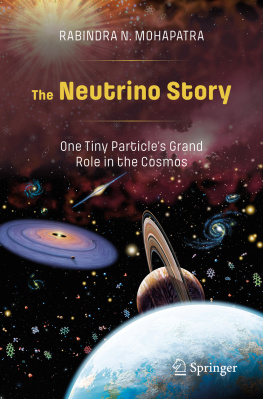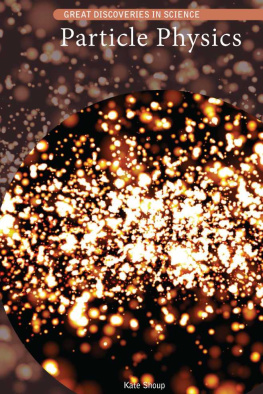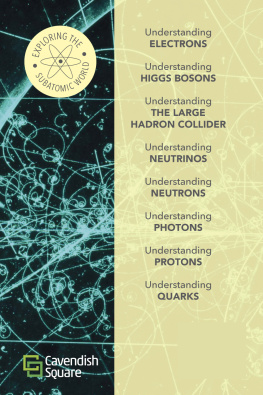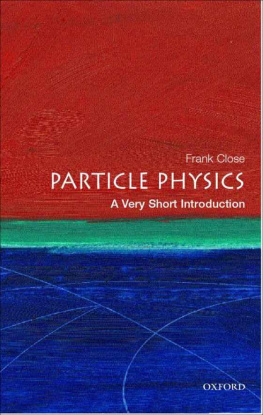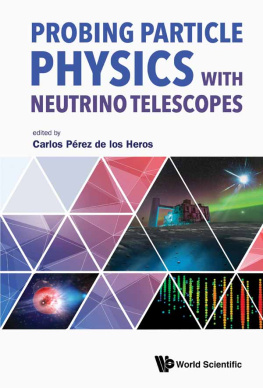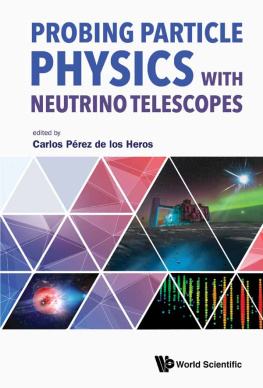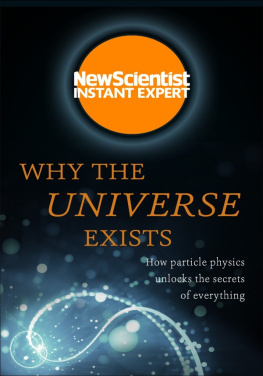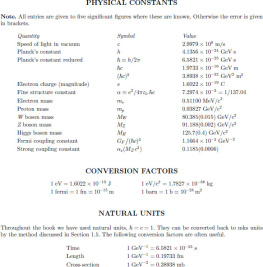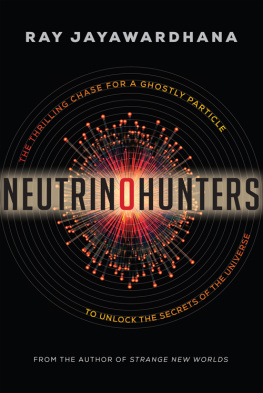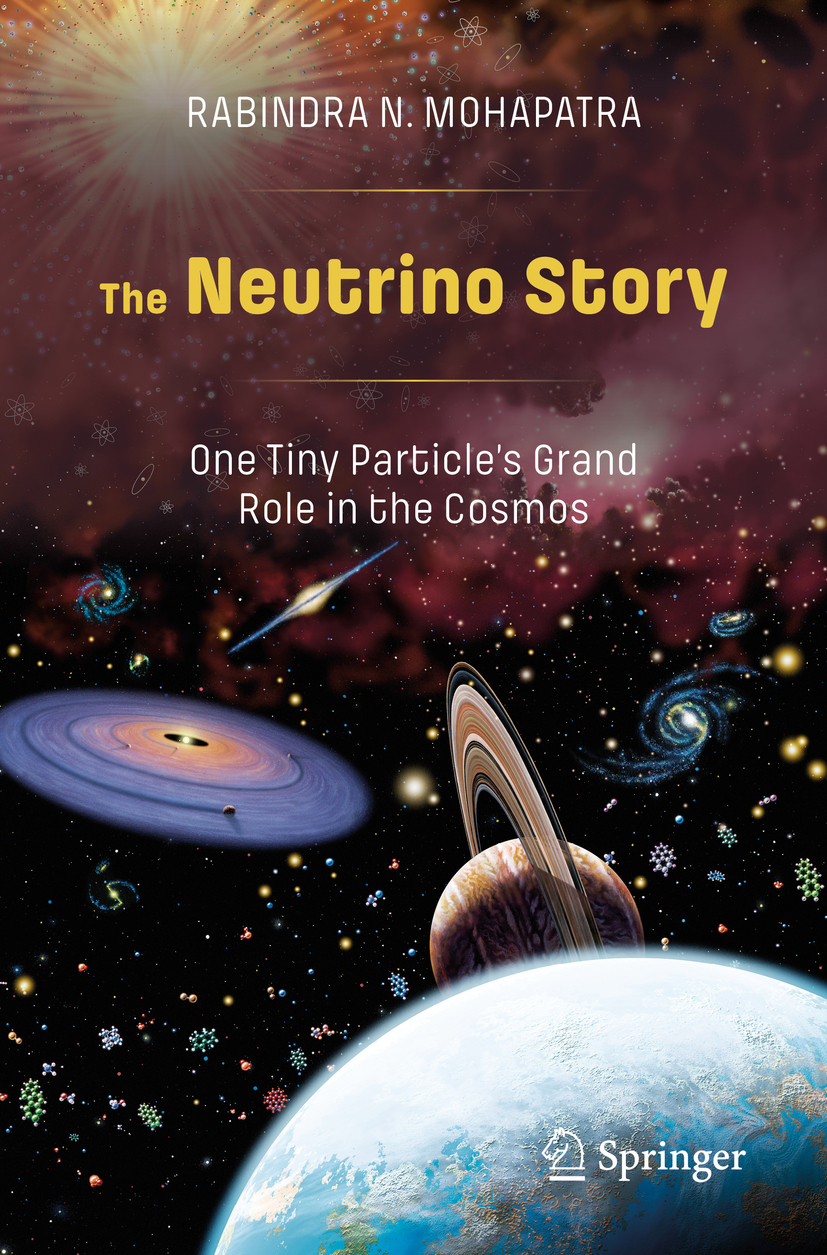Rabindra N. Mohapatra
Department of Physics, University of Maryland, College Park, MD, USA
ISBN 978-3-030-51845-5 e-ISBN 978-3-030-51846-2
https://doi.org/10.1007/978-3-030-51846-2
The Editor(s) (if applicable) and The Author(s), under exclusive license to Springer Nature Switzerland AG 2021
This work is subject to copyright. All rights are solely and exclusively licensed by the Publisher, whether the whole or part of the material is concerned, specifically the rights of translation, reprinting, reuse of illustrations, recitation, broadcasting, reproduction on microfilms or in any other physical way, and transmission or information storage and retrieval, electronic adaptation, computer software, or by similar or dissimilar methodology now known or hereafter developed.
The use of general descriptive names, registered names, trademarks, service marks, etc. in this publication does not imply, even in the absence of a specific statement, that such names are exempt from the relevant protective laws and regulations and therefore free for general use.
The publisher, the authors and the editors are safe to assume that the advice and information in this book are believed to be true and accurate at the date of publication. Neither the publisher nor the authors or the editors give a warranty, expressed or implied, with respect to the material contained herein or for any errors or omissions that may have been made. The publisher remains neutral with regard to jurisdictional claims in published maps and institutional affiliations.
Cover image: Lynette Cook / Science Photo Library
This Springer imprint is published by the registered company Springer Nature Switzerland AG
The registered company address is: Gewerbestrasse 11, 6330 Cham, Switzerland
Preface
Among the particles in the universe, the neutrino is the tiniest and the one with the weakest interactions, yet it has a disproportionately outsized influence on the creation of the universe that is our home today. That is why the story of the neutrino is a fascinating one. Starting with how it entered the discussion of science in 1930 to how it was discovered and how its properties were uncovered as time evolved, the neutrinos story has been laced with curiosity, suspense, hard work, and the thrill of discovery of the unanticipated. So is its promise for great societal applications in the future. The discoveries are still evolving with new investments on the international scale. The pursuit of a more complete knowledge of the neutrino is one of the most diligent scientific endeavors in the world today. Scientists are going out, all decks on hand to learn as much about this tiny particle as possible. They have set up nets in most unlikely places, from the deep cold Antarctica to the warm ocean floors and places around the globe. They have built instruments deep underground to catch the neutrinos from the sky, supernovae, the Sun, and the center of the galaxies. Everyday new knowledge is pouring in and being analyzed in sophisticated computer networks.
This book is an attempt to provide only a partial glimpse of the decades-long story of the neutrino, starting in 1930 when it first came into the scientific stage as a mere idea. Originally thought to be far-fetched, its existence was confirmed in the 1950s. Today many of its properties are known, uncovered by difficult experiments and scientific perseverance. Much still remains to be learned. My attempt to convey the excitement around the neutrino necessarily requires some knowledge of the basic rules of the game in the field of the sub-atomic physics, as well as some familiarity with the various stages in the evolution of the universe. The book tries to summarize them in arguably accessible terms, hoping that they can be followed without too much additional help. An attempt has been made to avoid the appearance of mathematical equations in the description of the various ideas except for one or two essential ones. The book is presented in four thematic parts, which we shall take a look at in Chapter : Introduction.
Rabindra N. Mohapatra
College Park, MD, USA
May 2020
Acknowledgements
The book is a distillation of my knowledge of the neutrino gained from numerous discussions and collaborations with many colleagues and students, to all of whom I am extremely grateful. They are too numerous to mention here.
I am extremely grateful to my wife, Manju, for carefully reading the entire manuscript, and making many suggestions for improvement of the text. Without her help, the book would have been much less readable.
During the time of writing of this book, the author was supported by grants from the US National Science Foundation No. PHY-1620074 and PHY1914731 and a sabbatical leave from the University of Maryland. The author is deeply grateful for these supports. The author also thanks Ms. Hannah Kaufman for guiding the book to publication at Springer Nature and Clement Wilson Kamalesh for help with processing the manuscript.
Rabindra N. Mohapatra
College Park, MD, USA
May 2020

